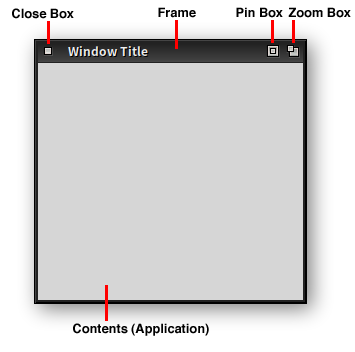Callisto Desktop/User Guide: Difference between revisions
(→Frame) |
|||
| Line 33: | Line 33: | ||
|- | |- | ||
| [[File:Callisto_UserGuide_48pxPlaceholder.png]] [[File:Callisto_UserGuide_MiddleClick.png]] | | [[File:Callisto_UserGuide_48pxPlaceholder.png]] [[File:Callisto_UserGuide_MiddleClick.png]] | ||
| Open | | Open an operations menu for this window. | ||
|- | |||
| [[File:Callisto_UserGuide_ShiftKey.png]] [[File:Callisto_UserGuide_MiddleClick.png]] | |||
| Open an operations menu for all windows belonging to this application. | |||
|- | |- | ||
| [[File:Callisto_UserGuide_48pxPlaceholder.png]] [[File:Callisto_UserGuide_RightClick.png]] | | [[File:Callisto_UserGuide_48pxPlaceholder.png]] [[File:Callisto_UserGuide_RightClick.png]] | ||
| Lower the window to the bottom of the stack. | | Lower the window to the bottom of the stack. | ||
|- | |||
| [[File:Callisto_UserGuide_ShiftKey.png|Shift Key]] [[File:Callisto_UserGuide_RightClick.png|Left Click]] | |||
| Lower all windows belonging to this application to the bottom of the stack. | |||
|} | |} | ||
Revision as of 04:16, 2 February 2023
A concise introduction
The Controller
The Desktop
Windows
Windows are floating containers furnished to applications by the system, which applications fill with their own content. The system retains ultimate control over windows, drawing a frame around each to clarify its state to the user and provide a means of manipulation. Applications vary in their intentions, and they often do unpredictable things within their windows' content areas, but the window frame belongs to the system. As such, it can be relied upon to behave consistently in all situations.
If an application is able to override the window manager's instructions, it is a bug in need of correction.
Windows float over the Desktop in a "stack." Imagine paper piled on a desk, or a Z axis protruding towards you from the display, with the Desktop furthest away from you. A window's place in the stack determines which windows appear above it, and which appear below it. Any part of a window not obscured by other windows can receive focus and accept user input. The stack can be easily reordered, using various means, to display the desired windows.
Anatomy of a Window

Frame
The border portion of a window, drawn and controlled by the system. Most window frames include a title bar at the top, which displays information about the window, provides a convenient space to grab the window with the mouse, and offers several widgets for controlling it. Transient windows, such as dialog boxes, often do not have title bars, but every window has a frame.
Close Box
The most straightforward window control, located in the upper left corner of each title bar, next to the title. Clicking this button closes the window cleanly, giving the application a chance to interrupt if there are unsaved changes or unfinished actions that must be discarded or canceled in order to do so.
| Action | Result |
|---|---|
| Close the window. | |
| Close all windows on the current desk belonging to this application. |
Pin Box
A tool for fixing a window in a certain spatial state. It can pin a window in two ways.
- Pin to Current Desk (left click)
- The window moves with the user across desks, appearing on whichever desk is currently shown.
- Pin to Top (right click)
- The window is fixed to the top of the stack. It will always appear above all other windows, and cannot be obscured.
Zoom Box
A tool for controlling a window's geometry (its width and height).
- Toggle geometry (left click)
- Returns the window to its last saved geometry.
- Copy or apply geometry (middle click)
- Obtains the window's geometry, which can be applied to another window by middle-clicking its Zoom Box.
- If a window's geometry has been copied, it displays a Zoom Box indicator icon in the tilebar when unfocused.
- Default geometry (right click)
- If a default geometry for the application is present in the active configuration, apply it to the focused window.
- Resize window (drag)
- Note about twm-style resize behavior